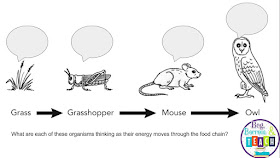Are you looking for an easier way to grade that accurately reflects the student’s knowledge? Would you like to streamline the process with technology? Then this post is for you!
This is the fifth, and final, post of the series based on the book Grading Smarter Not Harder by Myron Dueck. If you missed them, make sure you read:
Grading Smarter Not Harder: Overview
Grading Smarter Not Harder: Homework
Grading Smarter Not Harder Series: Retesting and a FREEBIE
This is the fifth, and final, post of the series based on the book Grading Smarter Not Harder by Myron Dueck. If you missed them, make sure you read:
Grading Smarter Not Harder: Overview
Grading Smarter Not Harder: Homework
Grading Smarter Not Harder Series: Retesting and a FREEBIE
Grading Smarter Not Harder Series: Grading Creative Projects
In this post, I am focusing on using technology to engage and assess students.
Reasons to use technology in the classroom:
Reason #1: It speaks students' language.
They are already using their phones to take and share pictures. Why not make that an educational experience?
Reason #2: Students think more critically when they are in their own environment.
They are going to be more willing to learn when they have prior knowledge. Asking them to go out into their community or home to gather information increases their comfort level.
In this post, I am focusing on using technology to engage and assess students.
Reasons to use technology in the classroom:
Reason #1: It speaks students' language.
They are already using their phones to take and share pictures. Why not make that an educational experience?
Reason #2: Students think more critically when they are in their own environment.
They are going to be more willing to learn when they have prior knowledge. Asking them to go out into their community or home to gather information increases their comfort level.
What are some ways to use technology for learning and assessments?
Digital Photos
Have students collect photos that demonstrate a certain concept you are teaching and send them to you.
For example, if we are discussing photosynthesis, students might take pictures of leaves in different stages of photosynthesis in the Fall (green, yellow, brown) and share them via Google Slides with captions.
Use PowerPoint or Google Slides to Create Thought Bubbles.
I like to find a picture of a scene we are talking about that day and add blank thought bubbles and have the students fill in what they think is going on in their minds in the picture. It adds some humor to the lesson!
Videos
Edpuzzle
Reasons EdPuzzle is a great tech resource:
Reasons EdPuzzle is a great tech resource:
- You can use any YouTube video and build a quiz into it.
- You can use the cut tool to snip any unwanted parts from the video.
- You can use multiple choice and free-response type questions.
- You can connect it to Google Classroom for easy/automatic assessment.
- Multiple choice questions are graded automatically.
- Depending on your county's internet security measures, putting a YouTube video in EdPuzzle will sometimes circumvent the problem of blocked YouTube videos.
- If students fail the assessment, they can reset and watch it again.
Here are a few things to keep in mind:
- Students can not edit their responses.
- Students need to watch the video until the end or it will not show up as complete.
- If you have multiple “correct answers” students must select all to get it “correct”. A way to fix this is to give any opinion questions a short-answer format.
- Short-Answer questions are not automatically graded. The teacher must read through those.
WatchKnowLearn
Since these videos are uploaded by educators, they have already been scrutinized for things like educational content and video quality. You can search through the thousands of videos by subject, grade level, and age.
Since these videos are uploaded by educators, they have already been scrutinized for things like educational content and video quality. You can search through the thousands of videos by subject, grade level, and age.
Apps/Websites
Recommended by Dueck, this website allows students to capture photos and videos and then use slow motion, arrows, lines, and commentary to analyze them, much like a sports caster or meteorologist would. They can email or share these commentaries with the teacher for immediate feedback or give classroom presentations.
Another website recommended by Dueck, this one allows “users to capture good examples against which students can compare their own work (e.g., speeches by Martin Luther King Jr. for a unit on public speaking).” This can also be sent electronically for feedback/grading.
Grading
Grade these photos, videos, and online assignments based on a rubric, which you would hand out before the assignment and/or post online. The rubric assigns point values for finding and representing specific concepts, such as key vocabulary, and can include additional questions to be answered or textbook pages to reference for help.
Online Document Management Systems
There are several reasons to use these:
They give immediate feedback/grades, which can be used to plan future instruction. No more waiting for days after giving an assessment to grade it and then figure out if you need to reteach information.
These systems quickly and accurately measure and compare the results.
Students often have their own devices on which they can take these assessments.
Teachers create formative assessments with multiple formats (multiple-choice, essay, true/false, etc.) and students access the assessments when the teacher shares the web link with them.
This website allows teachers to create online multiple-choice or fill-in-the-blank assessments and grades the test as soon as students finish it.
Which of these technologies are you currently using or plan to use in your classroom? I'd love to hear all about it!




No comments:
Post a Comment